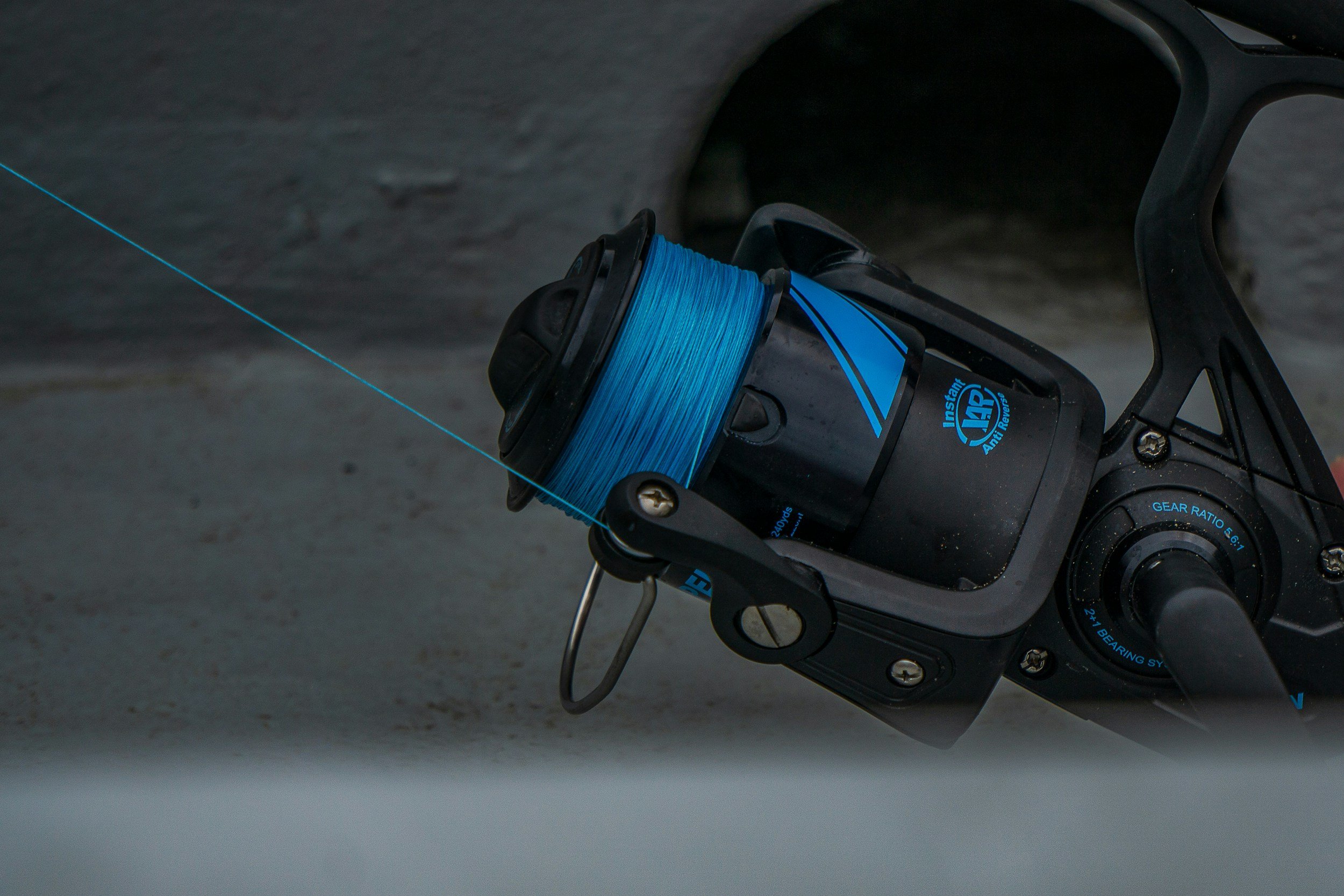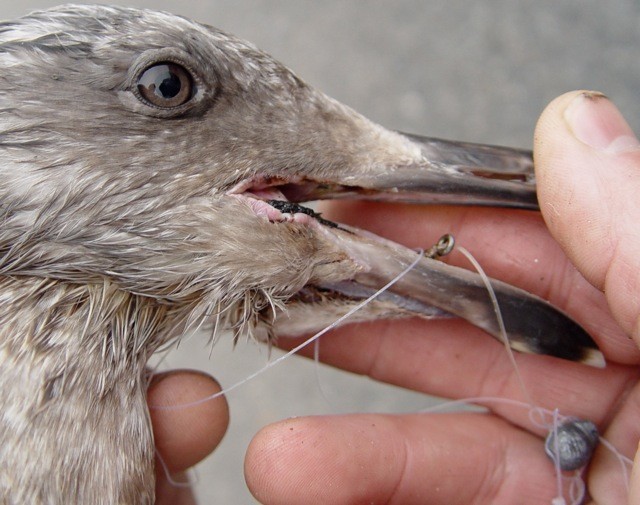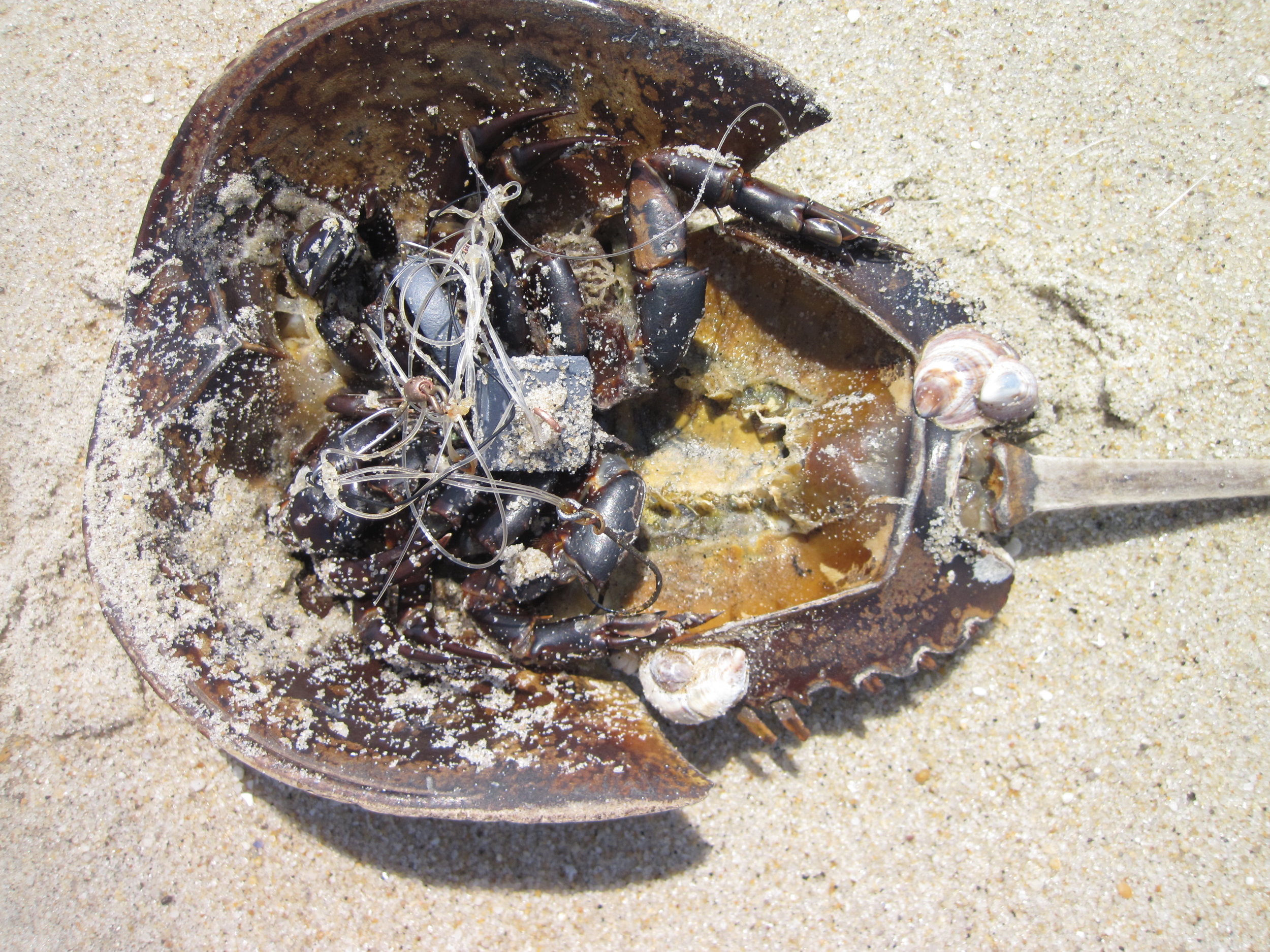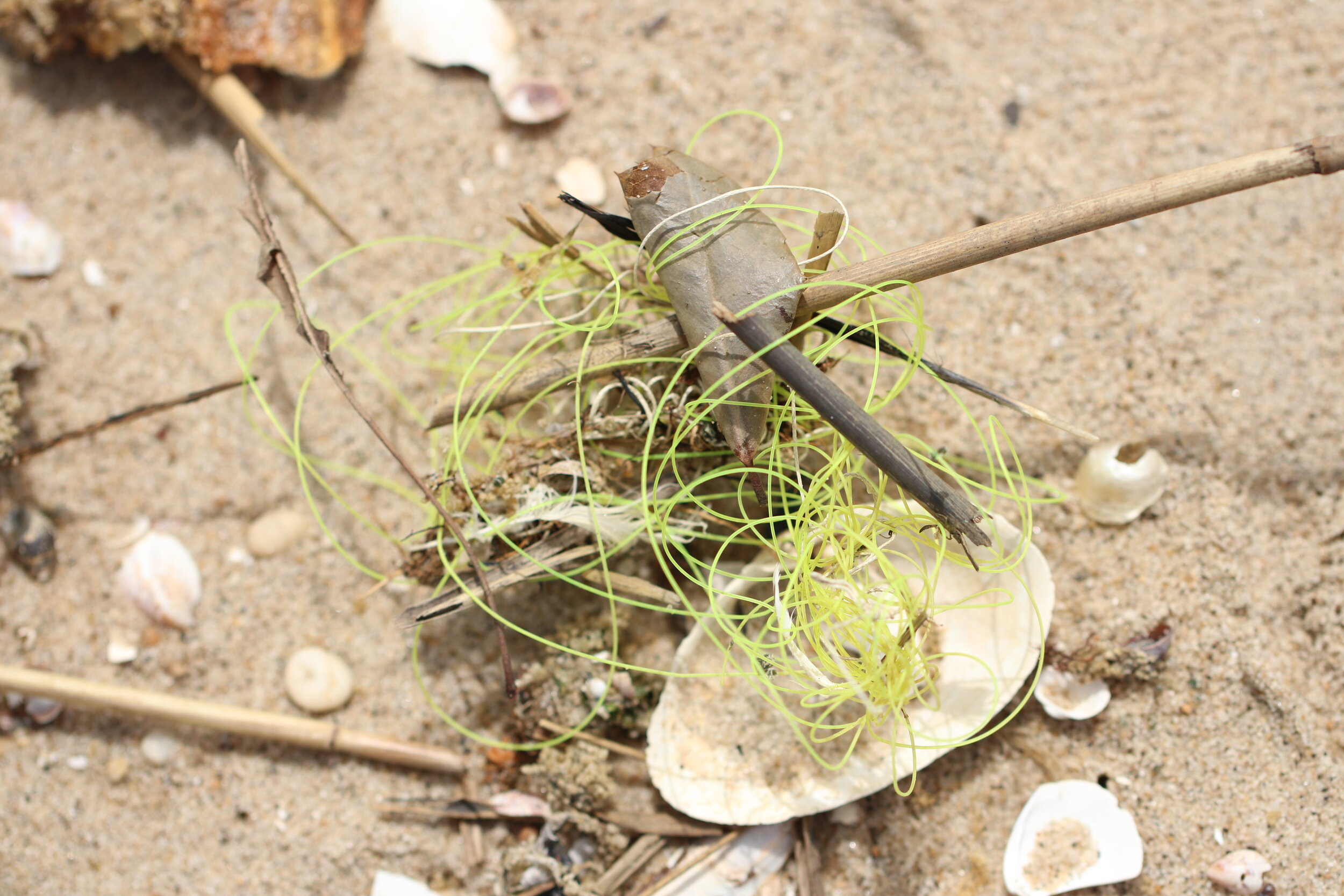
FISHING LINE IS A DEATH TRAP FOR WILDLIFE
The problem with recreational fishing line!
A juvenile gull with fishing line and a hook caught in its beak
Many coastal birds, horseshoe crabs, sea turtles, and marine mammals are injured or killed each year as the result of becoming tangled in fishing line and its associated hooks and tackle that have been improperly disposed of along beaches or thrown over from boats into the water.
Hooks and lines caught on branches and debris can harm animals and cause them to become tangled on legs, wings, and beaks of birds. Geese, ducks and gulls sustain crippling injuries after one or both of their legs become wrapped in fishing line. A hook caught in a beak or mouth can make eating painful or impossible, resulting in death by starvation.
Monofilament line is the most popular kind of fishing line. Monofilament line is a strong, flexible plastic line that is made in a single strand. It does degrade after a certain period of time, especially if left in direct sunlight. BUT the problem is mono and all other fishing lines are a hazard to all coastal wildlife because they are mostly clear and animals can become entangled in them. Or worse, they can ingest the lines and die.
On Saturday, June 15, 2019, volunteers with Save Coastal Wildlife found a male horseshoe crab entangled in fishing line along Raritan Bay, NJ.
WHAT CAN YOU DO?
While many anglers dispose of line in responsible ways, all it takes are a few uniformed or lazy people to make others look bad and cause coastal animals to suffer.
Please tell all people that fish that it’s important to recycle fishing line. Not only can animals become entangled in old fishing line and die or suffer multiple injuries, but boats can suffer damage if old fishing line is caught between the boat’s propellers.
Cut twine into small pieces before discarding. Most monofilament does not biodegrade. You can take used monofilament fishing line to recycling bins Or at your local tackle shop.
Always cut fishing line into pieces less than 6 inches long (preferably 1-inch). Dispose of it, along with hooks and tackle, in appropriate covered containers so it does not blow away or become a risk to wildlife.
Recycle fishing line. Place all broken or used line in a Monofilament Line Recycling Bin. If no recycling bins are available, place broken or used fishing line that has been cut into pieces in a lidded trash can.
Monofilament fishing line is recyclable
Volunteer your time to clean up fishing line debris at local beaches.
Support the use of biodegradable fishing line that does not have an indefinite life span in the environment.
Always check gear and terminal tackle. Inspect your gear often to avoid unwanted breaks. Even small amounts of gear in the water can be harmful to wildlife in entangled or ingested.
Reuse old fishing line. Tired of a necklace always breaking? Restring it with fishing line. Fishing line is very strong.
An adult Horseshoe Crab found dead on a beach at Sandy Hook, Gateway National Recreation Area, NJ, with its limbs wrapped in monofilament fishing line in 2013.
Old fishing line found on a bayside beach in New Jersey, 2019
Fishing Line and Trash can do great damage to coastal wildlife including to ospreys or fish hawks.
Trash does lots of damage to an osprey home including ripping off a wing of a young osprey from old fishing line.








